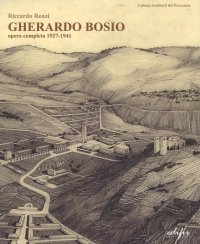Gio. Benedetto Castiglione Genovese. Il Grechetto a Roma. Committenza e opere
Edited by Orlando Anna and Francesco Rotatori.
Genova, 2023; paperback, pp. 304, col. ill., cm 23x29.
cover price: € 150.00
|
Books included in the offer:
Gio. Benedetto Castiglione Genovese. Il Grechetto a Roma. Committenza e opere
Edited by Orlando Anna and Francesco Rotatori.
Genova, 2023; paperback, pp. 304, col. ill., cm 23x29.
FREE (cover price: € 150.00)
Giovan Antonio Dosio Da San Gimignano Architetto e Scultor Fiorentino tra Roma, Firenze e Napoli
Edited by Emanuele Barletti.
Photographs by BACHerin Paolo and Saverio De Meo.
Prima edizione 2011.
Firenze, 2011; bound, pp. 844, b/w and col. ill., tavv., cm 24x28,5.
FREE (cover price: € 98.00)
Vincenzo Meucci
Co-Editore: Cassa di Risparmio di Firenze.
Firenze, 2015; hardback, pp. 304, col. ill., cm 25x29,5.
(Arte).
FREE (cover price: € 50.00)
Gherardo Bosio. Opera Completa 1927-1941
Firenze, 2016; paperback, pp. 368, b/w and col. ill., cm 23x28.
(Architetti del Novecento. Storia e archivi).
FREE (cover price: € 60.00)
From Kairos to Occasio through Fortuna. Text / Image / Afterlife On the Antique Critical Moment, a Grisaille in Mantua (School of Mantegna, 1495-1510), and the Fortunes of Aby Warburg (1866-1929)
Harvey Miller Publishers
Italian and English Text.
London, 2021; bound, pp. 211, 73 b/w ill., cm 22x28.
ISBN: 1-912554-62-3 - EAN13: 9781912554621
Subject: Essays (Art or Architecture),Textiles (Tapestries, Carpets, Embroyderies)
Period: 1400-1800 (XV-XVIII) Renaissance
Languages: 

Weight: 1 kg
The ancient Greeks had a name for the joy as well as the sorrow of an occasion that suddenly presents itself, but disappears just as swiftly: kairos, or in Latin occasio. Using the Mantua grisaille as starting point and leading motif, Barbara Baert guides us in her own intriguing way through the history of the representation of this figure in art. How did the archaic Greek Kairos model survive in the Quattrocento? Which appearances did Kairos take on along the way and how can we explain his mutations?
The author shows us how the semantic and rhetorical expansion of the concept kairos/occasio brought about gender switches and conflations with other personifications of time and fate. Grasping the lock of hair of Kairos/Occasio, spinning the wheel of fortune of Tyche/Fortuna, acting as the mast of the ship and holding the billowing sails, she steers us through depictions of the motionlessness of the moment throughout history before dropping anchor in the fascinating vocabulary of Aby Warburg. During this journey, she invites us to go offshore looking for a new critical moment that presents itself as a powerful opening of possibilities.












